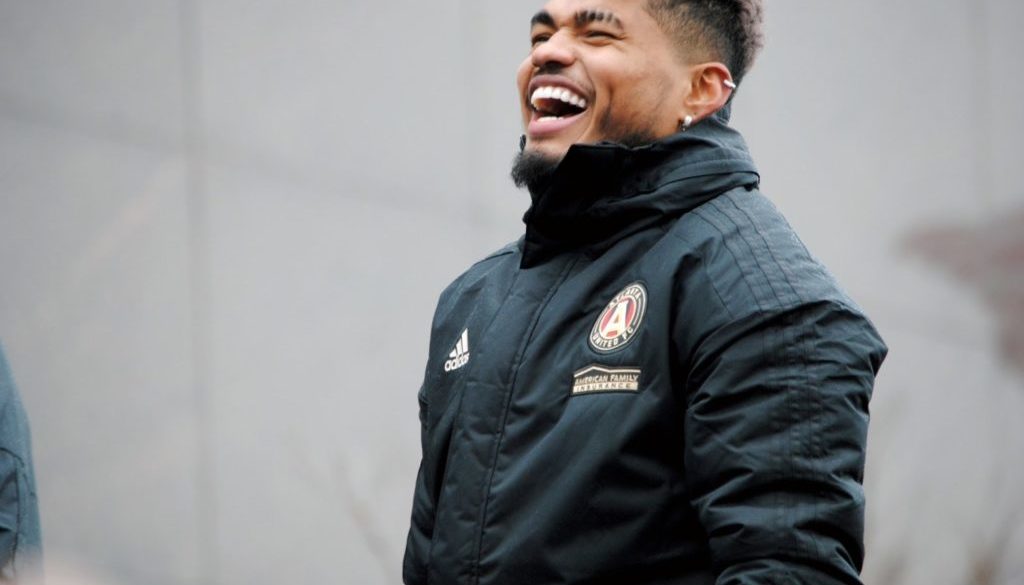Atlanta United Isn’t a Selling Club, And It’s Paying Off
Atlanta United’s meteoric rise to power in the league is no accident. They’ve become wildly successful after only their second season by making aggressive bids for matured talent.
The Argentine Primera Division was plundered for the likes of Miguel Almiron, LGP and Pity Martinez. Brad Guzan and Josef Martinez came from Europe. The Five Stripes also brought in MLS veterans like Michael Parkhurst and Darlington Nagbe.
The end result is arguably the most gifted team in MLS history, capable of smart defending, possession with purpose, and the ability to hurdle towards the opposing goal with pace and deadly goal-scoring potential.
There is a rising sentiment, though, that fielding the best possible 11 is not a reliable route to financial success.
Many argue that youth development is the pathway to a strong and stable league. It’s a strategy championed by MLS higher-ups like commissioner Don Garber, who said before the 2018 MLS Cup that, in order to make clubs profitable, “We need to be thinking about becoming more of a selling league to get the $100 million a year we’re spending.”
Other clubs have been parroting the same tune. The sale of Zack Steffen to Manchester City for $10 million was celebrated jubilantly by Columbus Crew, who were “pleased to finalize an agreement that benefits both clubs.”
The transfer is wonderful news for Steffen, who will probably never see playing time for Man City, but has nevertheless achieved new heights in his career by cementing a place on the world stage. But for Crew and its fans, the loss of the MLS 2018 Goalkeeper of the Year should be nothing less than travesty.
Too harsh? Maybe. But Atlanta United president Darren Eales would most likely agree.
In December, Eales dismissed a rumored fee of $15 million for Miguel Almiron to Newcastle as “chump change.” United ended up parting ways with Almiron, but they certainly weren’t happy about it. More importantly, they haven’t replaced him with a young player that has yet to to fulfill his potential.
Almiron’s replacement is Pity Martinez, a player in the prime of his career who was recently voted the 2018 South American Player of the Year. Martinez’s transfer is consistent with how United has done business thus far.
The process is simple. People tune in to see a winning team, and United obliges by recruiting a group of talented, experienced players. Alexi Lalas had a recent exposition with Fox that illustrates this point beautifully.
“The truth is, young developing and unfinished domestic talent for the most part, doesn’t move the needle. Because most people, like me, don’t tune in for the future. We tune in for the now,” Lalas said.
Garber’s concern for the financial durability of MLS teams and their youth development programs is misguided. Yes, it’s possible to develop players and flip them for a profit. The Dutch Eredivisie is a great example of that model.
However, most people would agree in saying that the MLS should have higher aspirations. Atlanta United is a shining example of what the league could be.
Atlanta United are playing for the now, and it is quite literally paying off. They sold over one million tickets in 2018, and three of their players are in the MLS top 25 jersey sales (both of these statistics are higher than any other team). According to Forbes, they are ranked the most valuable team in the league at $330 million.
Why be a selling club, when winning works so much better?





